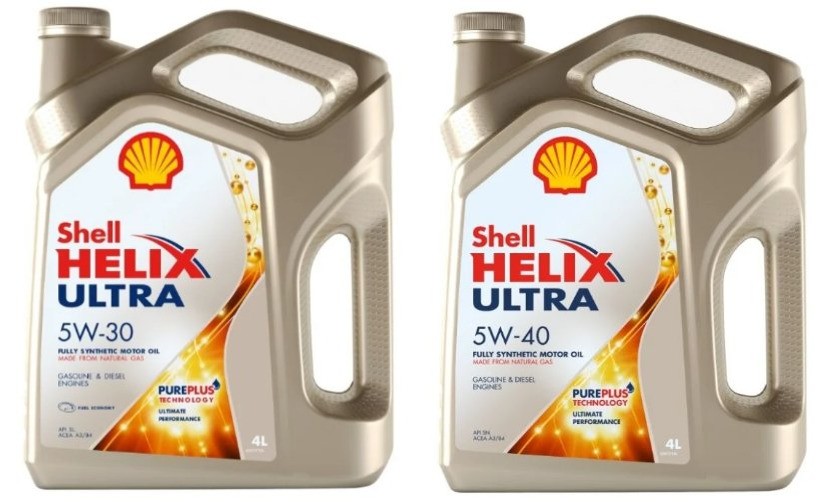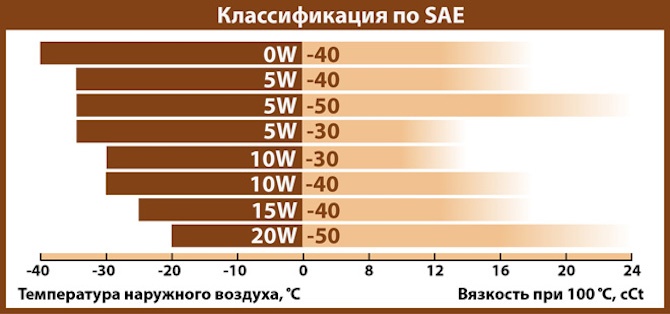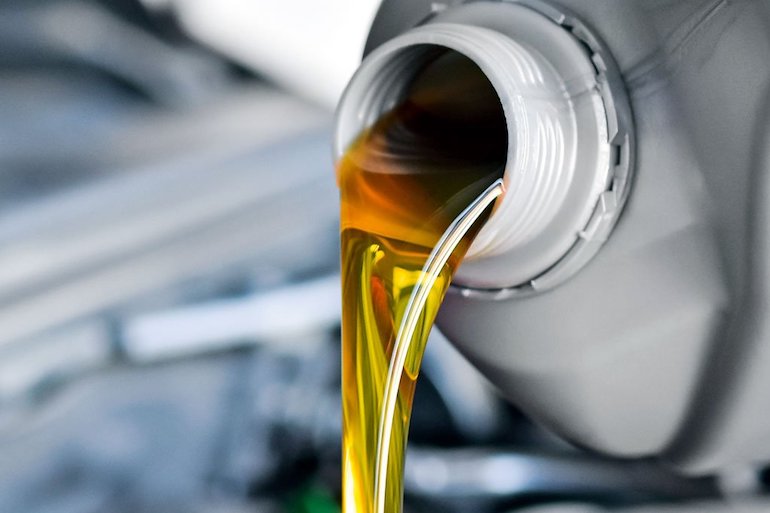
Can I use 5w40 oil instead of 5w30?
Content
One of the most popular questions among motorists is the interchangeability of motor oils. In many forums, you can find standard questions like: “is it possible to fill in 5w40 oil instead of 5w30?”, “Is it possible to mix mineral water with synthetics or semi-synthetics?” and so on. We have already answered many of these questions on our website Vodi.su, and we also analyzed in detail the features of SAE marking of motor oils. In this material, we will try to figure out whether the use of 5w40 instead of 5w30 is allowed.
Engine oils 5w40 and 5w30: differences and characteristics
The YwX format designation, where “y” and “x” are some numbers, must be indicated on cans of engine or transmission oil. This is the SAE (Society of Automobile Engineers) viscosity index. The characters in it have the following meaning:
- the Latin letter W is an abbreviation for English Winter - winter, that is, fuel and lubricants, where we see this letter, can be operated at sub-zero temperatures;
- the first digit - in both cases it is "5" - indicates the temperature minimum at which the oil provides crankshaft cranking and can be pumped through the fuel system without additional heating, for 5W0 fuel and lubricants this figure ranges from -35 ° C (pumpability) and -25 °C (turning);
- the last digits (40 and 30) - indicates the temperature minimum and maximum fluidity retention.

Thus, as it is not difficult to guess, according to the SAE classification, engine oils are next to each other and the differences between them are minimal. Let's list it for clarity:
- 5w30 - retains viscosity at ambient temperatures ranging from minus 25 to plus 25 degrees;
- 5w40 - designed for a wider range from minus 25 to plus 35–40 degrees.
Note that the upper temperature limit is not as important as the lower one, since the operating temperature of the oil in the engine rises to 150 degrees and above. That is, if you have Mannol, Castrol or Mobil 5w30 oil filled in, this does not mean that during a trip to Sochi, where temperatures rise above 30–40 degrees in summer, it must be changed immediately. If you constantly live in a hot climate, then you need to choose fuels and lubricants with a higher second number.
And another important difference between these two types of lubricants is the difference in viscosity. The composition of 5w40 is more viscous. Accordingly, starting a car at lower temperatures is much easier if a less viscous oil is filled in - in this case 5w30.
So is it possible to pour 5w30 instead of 5w40?
As with any other question regarding the operation of cars, there are many answers and even more “buts”. For example, if there is a critical situation, mixing different types of fuels and lubricants is quite acceptable, but after that you may have to completely flush the engine. Thus, in order to give the most professional recommendation, it is necessary to analyze the technical condition of the vehicle, the manufacturer's instructions, and the operating conditions.

We list situations in which switching to oil with a high viscosity index is not only possible, but sometimes simply necessary:
- during long-term operation of the vehicle in regions with a hotter climate;
- with a run on the odometer over 100 thousand kilometers;
- with a drop in compression in the engine;
- after engine overhaul;
- as a flush for short term use
Indeed, after passing 100 thousand kilometers, the gaps between the pistons and the cylinder walls increase. Because of this, there is an overrun of lubricant and fuel, a drop in power and compression. More viscous fuels and lubricants form a film of increased thickness on the walls to minimize gaps. Accordingly, by switching from 5w30 to 5w40, you thereby improve the dynamic performance and extend the life of the power unit. Note that in a more viscous oil medium, more effort is expended to crank the crankshaft, so the fuel consumption level is unlikely to decrease significantly.
Situations in which the transition from 5w30 to 5w40 is highly undesirable:
- in the instructions, the manufacturer forbade the use of other types of fuels and lubricants;
- a new car recently from the salon under warranty;
- decrease in air temperature.
Also very dangerous for the engine is the situation of mixing lubricants with different fluidity. Oil not only lubricates surfaces, but also removes excess heat. If we mix two products with different fluidity and viscosity coefficients, the engine will overheat. This issue is especially relevant for modern high-precision power units. And if at the service station you are offered to fill in 5w30 instead of 5w40, motivating this by the lack of the required type of lubricant in the warehouse, you should by no means agree, since after such manipulations heat dissipation will worsen, which is fraught with a whole bunch of related problems.

Conclusions
Based on all of the above, we come to the conclusion that the transition to one or another type of fuel and lubricants is possible only after a detailed study of the characteristics of the power unit and the requirements of the manufacturer. It is advisable to refrain from mixing lubricants from different manufacturers and on different bases - synthetics, semi-synthetics. Such a transition is dangerous for new cars. If the mileage is large, it is necessary to consult with specialists.
Video


Watch this video on YouTube
Loading…
